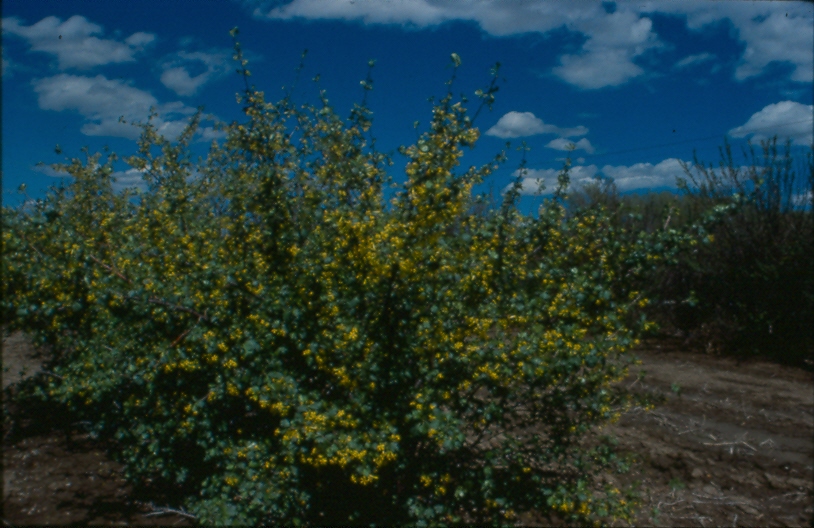Golden Currant
 Ribes odoratum, or Golden currant, grows along the woodland borders or in the open. It tolerates about 50% shade. It prefers a well-drained soil and is rather common in sandy areas of central Kansas. It is found statewide often in loose, open thickets.
Ribes odoratum, or Golden currant, grows along the woodland borders or in the open. It tolerates about 50% shade. It prefers a well-drained soil and is rather common in sandy areas of central Kansas. It is found statewide often in loose, open thickets.
Mature Size
Golden currant reaches a height of 3 to 5 feet and a spread of 3 to 5 feet.
Growth Rate
It grows at about 12 to 18 inches per year.
Leaves, Stems and Fruit
Leaves are rounded or triangular with 3 to 5 lobes. Yellow flowers bloom in late May. These are followed by a 1/3 to 1/2 inch, rounded, edible fruit which are purple-black when ripe. The twigs do not have thorns.
Use
Wildlife Habitat - Golden currant provides preferred roosting, loafing, or nesting cover for several songbirds. It's fruit is used by many birds for food. This plant is a preferred browse for mule deer.
Windbreaks - This plant can be used as an outside row in windbreaks. Its open growth pattern makes it a poor choice for single row windbreaks.
Human Food - The fruit is edible and may be used in pies, jam and jelly.
Adaptation and Soil
Golden currant has adapted statewide and prefers well drained soils.
Spacing
Golden currants are usually spaced 4 feet apart.
Culture
One-year-old, bare-root seedlings, 12 to 18 inches tall are used in conservation plantings. Control of weed and grass competition is important for good survival and growth.
Pests
No serious pests.
Soil Information
| Average Height in 20 Yrs: | |
| -Eastern | 3-5 ft. |
| -Central | 3-5 ft. |
| -Western | 3-5 ft. |
| Growth Rate: | Medium |
| Native Species: | Native to Kansas |
| Windbreak Value: | High |
| Wildlife Value: | High |
| Lumber Products: | No |
| Fuelwood Products: | No |
| Drought Tolerance: | High |
| Texture: | 2 |
| Soil Saturation: | No Tolerance |
| Salinity Tolerance: | No Tolerance |
| pH Range: | 6-8 |